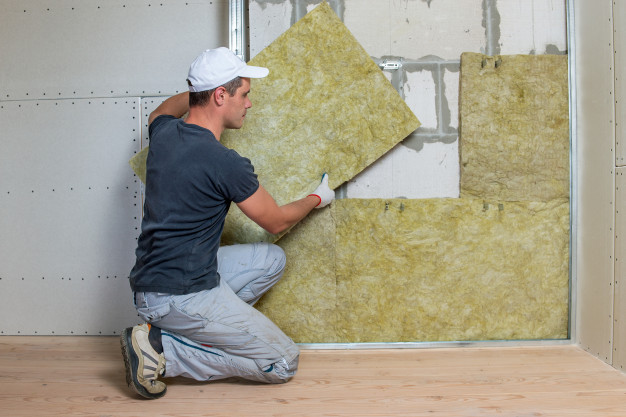The Complete Guide to Soundproofing an Entire House

Get The Most of You Walls and Ceilings
- Installing acoustic ceiling tiles or panels
- Clad ceilings with gypsum boards that are perforated
- Clad walls with MDF boards
- Fiberglass on the Ceiling
- Plasterboards
The Materials And Techniques of Sound Absorption
One will find many soft surfaces and materials at home that can dampen reverberation and echoes. In short, they can absorb sounds. These materials are carpeting, upholstered furniture, padded and blackout curtains, etc. If you want to minimize the sound bouncing around the room, avoid installing hard materials such as tiles, laminates, and hardwood.
Acoustic Foam and Tiles
Types of acoustic insulation depend on the layout of the house. Acoustic foam is a great and popular sound-absorbing material that improves the quality of sound in a room. Almost all the sound-absorbing materials are light, porous and soft that minimise unwanted noise and sounds for peace of mind living. Be it home theatre, recording studio, podcast booth or perhaps a music room, acoustic foam, and tiles are industry-standard sound absorption materials that work like a charm wherever you install them in your house. Whether you want to create a recreational room or set up a work-from-home space, acoustic floor insulation works great to soften the sound coming from any direction.
How to Soundproof Walls
There are two types of the wall that homeowners are always keen to soundproof. A solid standard party wall constructed with a block or brick formation and the internal stud wall that consists of plasterboard insulation and a timber frame. The constructing of acoustic walls and soundproofing panels against high-traffic areas and noisy neighbors has become quite popular and has been relevant ever since. This is one of the best and most affordable ways to soundproof a bedroom and other parts of the house such as living rooms.
The first thing to keep in mind before soundproofing walls is to check for weak points or gaps. This can be filled with acoustic sealant from improved noise reduction and security. The process of improvement of the walling mass should be next with the addition of the acoustic insulation between timber battens which is generally the long strip of the wood. It is advisable to choose different combinations of materials and successfully block the unwanted sounds of many different frequencies.
Soundproofing a Wall
The best acoustic insulation systems are used by professionals in the music, radio, and television industry. The highest level of soundproof insulation is achieved by creating a room within a room and one that is separate from the external structure. This is also referred to as acoustic de-coupling. In this process, the vibration between solid materials and the air is eliminated. Safety should be a priority in creating such rooms where a reasonable degree of ventilation is a must.
The other most common methods of soundproofing a wall include the installation of thin and light sound panels and complete acoustic wall systems. One does not sacrifice an interior space with soundproofing panels, and the results are very effective uniquely tailored to one’s setting. To achieve the very best of soundproofing, ensure to install a combination of materials such as high-density insulation slabs for the limitation of reverberation and sound absorption. You can also fit stud walling, with different levels of insulation and thickness to suit the depth of your existing stud walls.
Wrapping Up
Houses that are poorly build are susceptible to high amounts of noise transfer both from the outside and inside but particularly between the rooms themselves. Living under a poor acoustic roof is a nightmare for many. This is something that builders need to consider during the design stage of the project. Also, the potential owners need to inspect before they get hands-on the long-awaited keys of the brand new house.
The best insulation for a house depends on many factors. Soundproofing a new or existing home is about finding the right balance between appearance, function, comfort, and cost.
Whether you are soundproofing an older house or the new one in the making, there are many ways to reduce the amount of unwanted sound traveling in and around. There will be advantages and disadvantages of insulators, therefore an inspection is necessary before choosing one for your needs. Inspect key problem areas such as windows, walls, ceilings, and doors to determine which material will work best for the desired space of your home.
Rockwool insulation products have excellent t sound absorption and noise reduction properties for your home needs, and choosing the right one will make all the difference. Before taking or paying for any major soundproofing projects such as acoustic ceiling panels, it is always a good idea to talk to insulation professionals about various types of solutions that will suit your exact needs.
SHARE
Stay in touch
To be updated with all the latest news, offers and special announcements.







